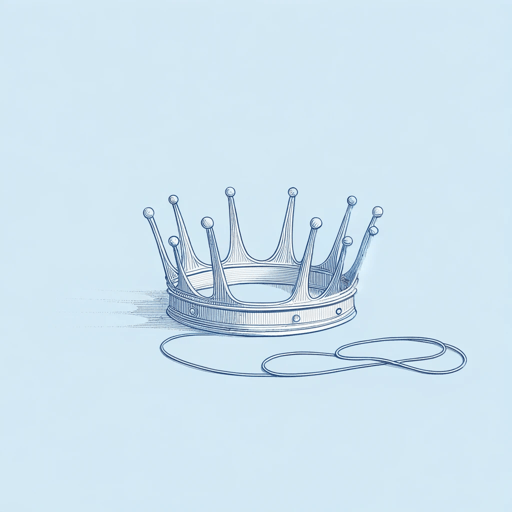67 pages • 2 hours read
William ShakespeareThe Taming of the Shrew
Fiction | Play | Adult | Published in 1593A modern alternative to SparkNotes and CliffsNotes, SuperSummary offers high-quality Study Guides with detailed chapter summaries and analysis of major themes, characters, and more. For select classroom titles, we also provide Teaching Guides with discussion and quiz questions to prompt student engagement.
Summary and Study Guide
Overview
The Taming of the Shrew is one of William Shakespeare’s earliest comedies, probably first performed around 1593. While the play’s depiction of women is the subject of much debate among modern readers and scholars, its popularity endures, and the play continues to be reproduced in various mediums. Notable adaptations include the 1967 film starring Elizabeth Taylor and Richard Burton, and the 1999 romantic comedy 10 Things I Hate About You.
This guide refers to the 2014 Folger Shakespeare Library edition of the play. Note that the references use line numbers rather than page numbers, so you can use this guide with different editions.
Plot Summary
The play begins with a frame story: A passing lord spots Christopher Sly, a drunken peddler, sleeping off a heavy night in the gutter and decides to play a trick on him, making him believe that he’s really a noble gentleman who’s been under the delusion he’s a lowly commoner. This plan works perfectly; believing himself a gentleman with a lovely lady wife (in fact a pageboy in disguise), Sly sits down to enjoy a night at the theater, watching The Taming of the Shrew itself.
As the play proper begins, Lucentio, an idealistic young nobleman, has arrived in Padua to go to university, attended by his clever servant Tranio. The pair are exploring the streets when they spot a local rich man named Baptista, who is accompanied by his two daughters Katherine and Bianca. Baptista is trying to get two gentlemen, Hortensio and the elderly Gremio, to leave him alone. Both gentlemen want to marry the modest and beautiful Bianca, but Baptista refuses to let her wed before someone agrees to marry his older daughter Katherine. And no one wants to: Katherine, a famous local “shrew” (or angry, scolding woman), is renowned for her violent temper. When Baptista and his daughters depart, Hortensio and Gremio agree to work together to find some sucker who will marry Katherine so they can have a chance of winning Bianca.
Lucentio falls in love with Bianca at first sight. Tranio helps him hatch a scheme to get close to her: Lucentio will disguise himself as a tutor for Bianca, and Tranio will pretend to be Lucentio and present himself to Baptista as a wealthy suitor.
Not long after, Hortensio’s old friend Petruchio comes to town. He’s looking for a wife and doesn’t really care who she is, so long as she’s rich. Hortensio tells him he knows just the lady: the sharp-tongued Katherine. Petruchio heartily agrees to this plan, despite Hortensio’s warnings that Katherine is truly hard work. Petruchio also agrees to present a disguised Hortensio to Baptista as a music tutor for Bianca.
All these complex schemes get rolling at once. The disguised Lucentio and Hortensio woo Bianca (Lucentio more successfully), and after a battle of wits, Petruchio and Katherine get engaged. Petruchio has a scheme: he’ll “tame” his angry new bride by tormenting her under the guise of protecting her. He’ll starve her by claiming that no food is good enough for her, and he’ll never let her sleep by claiming that the bedlinens aren’t fine enough for her. That’s how you tame a hawk, he says, and he sees no reason it shouldn’t work on a wife.
Meanwhile, Tranio has nearly persuaded Baptista to let him (or, rather, Lucentio, whom he’s impersonating) marry Bianca by offering enormous riches. But Baptista has one condition: He wants Lucentio’s wealthy father to give an affidavit that all this wealth will indeed come to Bianca if Lucentio happens to die. Otherwise, she’ll have to marry the rich and elderly Gremio. Tranio thus goes to find a decoy dad and successfully persuades a traveling merchant to pretend to be Vincentio, Lucentio’s father. Baptista and this false Vincentio happily come to an agreement; in the meantime, Lucentio and Bianca elope. Hortensio, who caught Bianca making out with Lucentio earlier, withdraws from the competition to marry a wealthy widow who’s had her eye on him.
Petruchio carries out his plan on his newlywed wife Katherine, withholding her food and shredding all her new clothing—all under the pretense that nothing is good enough for her. At last defeated, Katherine begins agreeing with everything he says, no matter how ridiculous, just to keep him from causing any more trouble. But in her defeat, she also starts to enjoy conspiring with him. On the road to Padua to celebrate Bianca’s wedding, the pair meet an old man and greet him as if he’s a beautiful young maiden, playing off each other’s inventions. As it happens, this old man is the real Vincentio, and Petruchio tells him that they’re off to celebrate his son’s wedding.
Vincentio isn’t too pleased to learn that Lucentio has arranged his marriage without his father’s consent. He’s even less pleased when he arrives in Padua and finds the merchant pretending to be him and Tranio calling himself Lucentio. But before too much chaos ensues, Lucentio appears with his new bride Bianca and explains the whole situation.
The play ends with a jolly wedding feast: Lucentio and Bianca, Hortensio and his wealthy widow, and Katherine and Petruchio are all celebrating. In a festive mood, Petruchio bets that Katherine has become the most dutiful of all the wives, and the three bridegrooms lay a hefty wager on it. Indeed, Bianca and the widow both fail to appear when their husbands call them. Katherine not only turns up but also delivers a lengthy speech on the obedience and affection that wives owe their husbands. Gloating, Petruchio spirits Katherine away to bed—leaving the rest of the crowd to marvel at how thoroughly this “shrew” has been tamed.
Related Titles
By William Shakespeare

All's Well That Ends Well
William Shakespeare

A Midsummer Night's Dream
William Shakespeare

Antony and Cleopatra
William Shakespeare

As You Like It
William Shakespeare

Coriolanus
William Shakespeare

Cymbeline
William Shakespeare

Hamlet
William Shakespeare

Henry IV, Part 1
William Shakespeare

Henry IV, Part 2
William Shakespeare

Henry V
William Shakespeare

Henry VIII
William Shakespeare

Henry VI, Part 1
William Shakespeare

Henry VI, Part 3
William Shakespeare

Julius Caesar
William Shakespeare

King John
William Shakespeare

King Lear
William Shakespeare

Love's Labour's Lost
William Shakespeare

Macbeth
William Shakespeare

Measure For Measure
William Shakespeare

Much Ado About Nothing
William Shakespeare
Featured Collections
Books Made into Movies
View Collection
Class
View Collection
Class
View Collection
Comedies & Satirical Plays
View Collection
Elizabethan Era
View Collection
Laugh-out-Loud Books
View Collection
Marriage
View Collection
Required Reading Lists
View Collection
Shakespeare
View Collection

